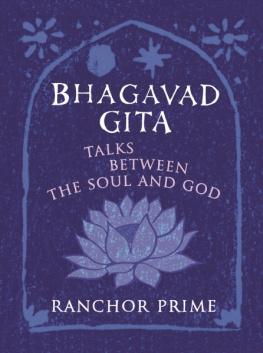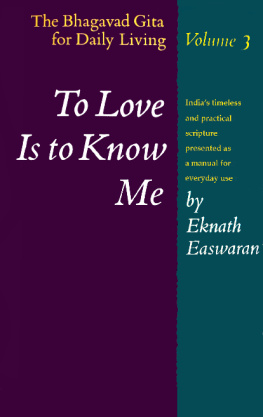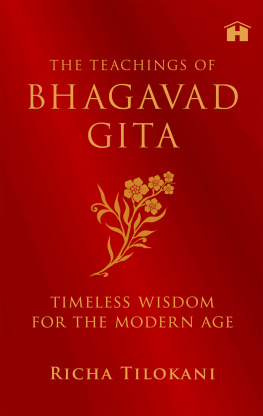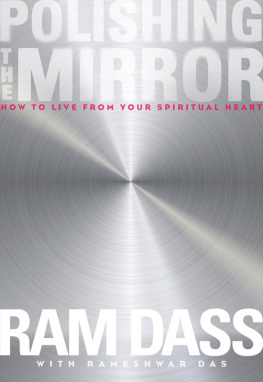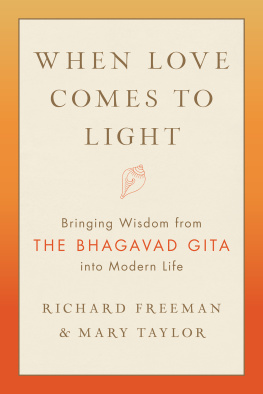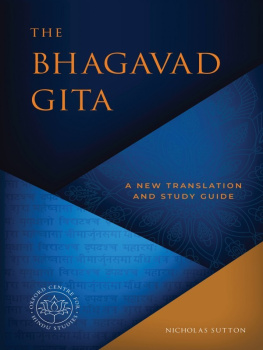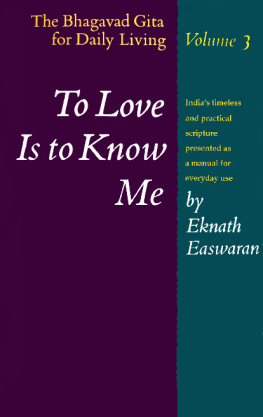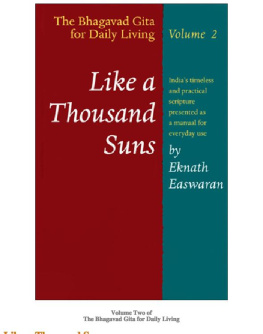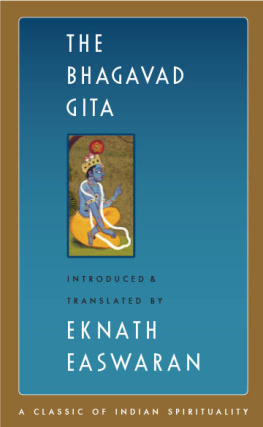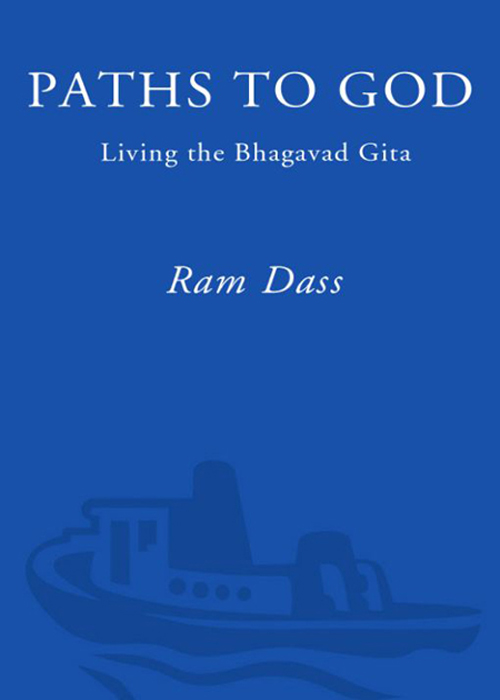
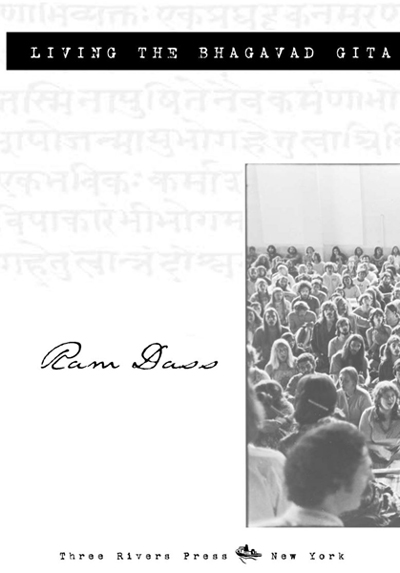
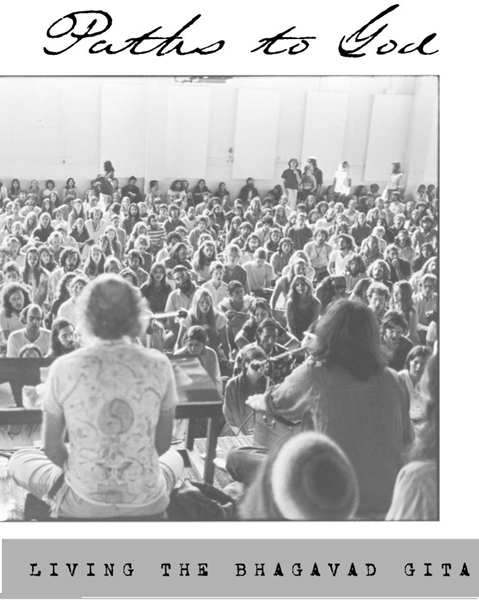
Table of Contents
To my gurus...
Praise for Paths to God
Ram Dass makes the Bhagavad Gita... easily accessible and practical in how we can touch the deep mystery and live a good life in modern times.
Angeles Arrien, Ph.D.,
author of The Four-Fold Way
and Signs of Life
What a blessing: Ram Dass on the Bhagavad Gita. Who better to lead the Western mind into the profound depths of this spiritual classic. With wisdom, humor, and great compassion, Paths to God illuminates the liberating power of the Gitaa rare gift in these unsettled times.
Joseph Goldstein,
author of One Dharma: The
Emerging Western Buddhism
Ram Dass is the perfect person to relate the timeless wisdom of the Bhagavad Gita to the real challenges, joys, and sorrows of our present time. Through offering a wide variety of approaches to spiritual happiness, Paths to God is one of the most inclusive and inviting books available to us.
Sharon Salzberg,
author of Faith: Trusting Your Own
Deepest Experience
Acknowledgments
There are three women whose contributions have made this book possiblethe Three Graces: Jo Anne Baughan, Gita (Lee) Brady, and Parvati (Betty) ONeill. Without the gifts of each of them, this book could not have happened.
At many gatherings nowadays, there is what is called a Keeper of the Heartsomeone whose task it is to hold an open, loving space, no matter what is going on around her. Jo Anne has been the Keeper of the Heart for this book. In a thousand unsung ways, she has literally loved this book into being.
Gita created both the glossary and the resources guide for this book, starting from a shoe box full of random clippings and scribblings. Out of her deep familiarity with spiritual literature, she has spun straw into gold and created a spiritual storehouse full of all sorts of rich and tasty treats.
Parvati, who was one of the students at Ram Dasss Naropa workshop, phoned to offer her help at a crucial moment, when the transcription of the lectures was hopelessly stalled. Not only did she transcribe some of the tapes, but she sent along a treasure of Naropa memorabilia, including some personal photos of the event and a copy of the original syllabus, which wed given up hope of finding. Parvati died of cancer in 2001. Her gift lives on in this book.
In addition to Jo Anne, Gita, and Parvati, we also want to extend thanks to the staff members of Naropa University for their encouragement and cooperation, and special thanks to Richard Chamberlain of Naropas Development Office for somehow managing to lay his hands on a copy of the original 1974 summer schedule, which provided a wealth of information about the event. Our thanks to Joseph Goldstein and to Jack Kornfield for generously allowing us to use their food meditations in this book; their practices added a fresh dimension to the workshop, and now to this book as well. And thanks to Rameshwar Das for being our eyes at the workshop, and for sharing some of the photographs he took there.
When, at the last moment, we found we needed to track down sources for the many quotes that had been included in the Naropa lectures, a number of volunteers stepped forward to help with the task. Our thanks to all of those who joined the treasure hunt: James Beane, Carolyn Behnke, Caroline Bloomfield, Denise Coates, Stefani Cohen, Robin Collins, Aaron Crawford, Nonda Gaylord, Deborah Hopping, Linda Kleckner, Dale Martin, Bobbie Mims, Ralf Mrutzek, Kathleen Murphy, Linda Nicholas, Sharon and Larry Roll, George T. Stergiou Jr., and Paul Wilson.
And, of course, most of all, thanks to Neem Karoli Baba, for gracing us all with parts in this dance. Ki jay!
BACKWARD AND FOREWORD Or... Where This Book Came from, and How It Might Be Used
This book has a curious history. It grew out of a workshop called The Yogas of the Bhagavad Gita that Ram Dass taught in the summer of 1974. He presented the workshop as part of the curriculum for a summer session at the newly established Naropa Institute (now Naropa University) in Boulder, Colorado.
Naropa was founded by Chgyam Trungpa Rinpoche, a Tibetan Tulku and Vajrayana master. Trungpa was trained in the philosophical and meditative traditions of two branches of Tibetan Buddhismthe Kargyu and Nyingma sectsand he was one of the first teachers to begin introducing Tibetan practices to the West.
Naropas aim was to explore the teachings of Eastern religious traditions within a rigorous, Western academic environment. The program for the summer session announced, The purpose of Naropa Institute is to provide an environment in which the Eastern and Western intellectual traditions can interact and in which these disciplines can be grounded in the personal experience and practice of staff and students. All of the staff members are involved in the practice of some discipline related to psychological and spiritual growth. It is this direct experience which can form the sound basis for integrating the complementary intellectual and sensory-intuitive approaches to living in the world.
In other words, Naropa set out to meet the Western academic establishment on its own terms, to become an accredited, degree-granting institution of higher learning, but one that would offer degrees in fields like Buddhist Studies, Exploration of Self and Society, and a cross-cultural, inter-disciplinary combination of the two. Courses included not only the more intellectual disciplinesthe humanities and the social and physical sciencesbut also meditation, sensory awareness, dance, tai chi chuan, theater, art, and music. You could get credit toward a B.A. from Naropa for taking Ram Dasss workshop.
Ram Dass supported the establishment of Naropa because he was interested in the experiment that such an institution represented. But more than that, Ram Dass honored the teachings and traditions of Trungpa Rinpoche, and wanted to help them take root in the West. And so, in June and July of 1974, he joined the faculty for the summer session that would inaugurate Naropa.
That summer at Naropa brought together an outstanding cast of teachers. Besides Ram Dass and Trungpa Rinpoche, the faculty included Allen Ginsberg, Gregory Bateson, Jos Arguelles, Jack Kornfield, Ben Weaver, and some two dozen others. Ram Dasss own staff of teaching assistants included Krishna Das, Joseph Goldstein, Rameshwar Das, Mirabai Bush, Paul Gorman, and Ram Dev. Mirabai called that summer at Naropa the seedpod for the teachings that would shape the growing presence of Eastern spirituality in the West. There were courses in Tibetan and Theravadan Buddhism, in the Sanskrit and Mongolian languages, in Tantric literature and Japanese arteven in artificial intelligence (which was distinctly cutting edge in 1974!). One of the participants called that summer at Naropa the Hindu-Buddhist Woodstock.
And in the program for the summer session, under the heading Modes of Self-Exploration, was listed Ram Dasss course, The Yogas of the Bhagavad Gita. The course description read: The Bhagavad Gita (The Song of God) is both one of the most sacred books in India and also one of the most profound statements of yoga. In the West many of us find that karma yoga is the most suitable practice, and the Bhagavad Gita is unparalleled as a statement of this form, i.e., the yoga of conscious service. Through reflection on the text and the many commentaries (Krishna Prem, Gandhi, etc.), we can evolve a perceptual framework which allows us to transmute daily life experience into a vehicle for liberation.
Next page

